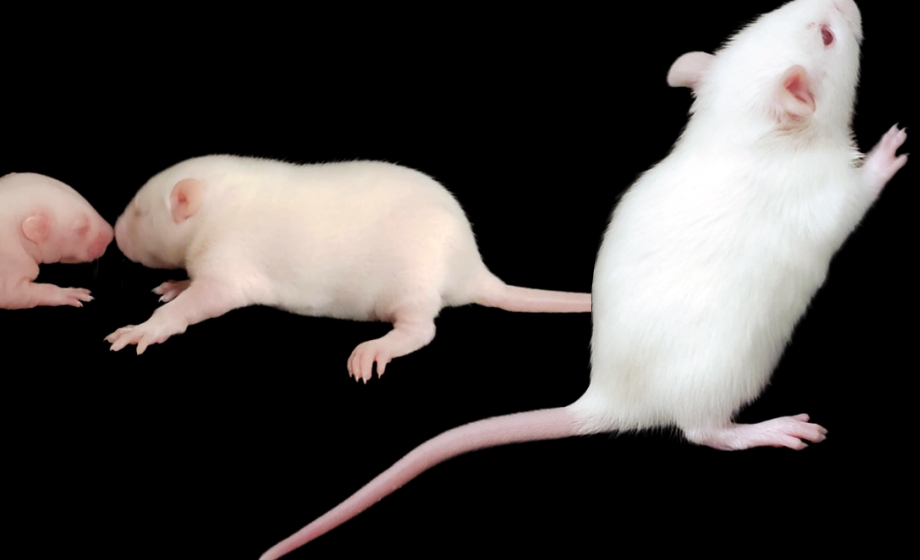Q&A Report: Sensorimotor Network Development During Early Postnatal Life in the Awake and Sleeping Brain
What is the advantage of the Mobile Homecage vs a "normal" home cage?
J. Dooley: The biggest advantage of the Mobile HomeCage for us was the pup’s ability to locomote while remaining headfixed. Because we do acute experiments, and because we found that rat pups quickly habituate to these recording conditions so long as they can locomote freely, this was the ideal experimental setup for us.
A. Cavaccini: The mobile home cage allows us to perform electrophysiological recordings on head-fixed neonatal mice that can locomote. Due to the weight and size of current implants we cannot perform such recordings on freely moving neonatal mice.
Is there a quantitative measurement of the stress level of the pups head-fixed in the Mobile HomeCage?
J. Dooley: Although not quantitative per-se, because my research is interested in neural activity during sleep, and infant rats do not readily sleep if they are stressed, we are confident that within an hour after being head-fixed (when pups begin cycling between sleep and wake) they have habituated to the Mobile HomeCage. In addition to cycling between sleep and wake, it’s worth mentioning that after about 15 minutes in the Mobile HomeCage, the pups do not vocalize or exhibit any other signs of distress (e.g., struggling against head-fix).
Brain coordinates change across development in rats. Did you change the recording coordinates for different recordings ?
J. Dooley: All of the recording sites (and pharmacological manipulations) were confirmed histologically – but this was left out of the talk for time constraints. However, for what it’s worth, the coordinates for VL and VP were quite similar between 12 and 20 days of age. The biggest change was in the anterior-posterior axis, with the center of VL being ~2.1 mm caudal to bregma at 12 days of age, and ~2.3 mm caudal to bregma at 20 days of age. We found a similar difference in VP, which overall is caudal to VL.
A. Cavaccini: Yes, the recording coordinates for the striatum change depending on the age of the mouse or the rat (although we have not worked with the latter).
In an acute setup is locomotion affected by anesthesia/surgery? Do the mice recover enough for behavioral testing?
A. Cavaccini: I would say that they recover enough. I have observed that the average travel distance of mouse pups <P13 in my experiments is similar to the one recorded by van der Bourg A. and colleagues (Cerebral Cortex, 2017) in freely moving mouse pups of the same age.
How long were you able to record from one mouse over time (i.e. how many days)?
A. Cavaccini: My experiments last one single day. In order to do a longitudinal electrophysiological experiment for many days I would need to prepare a chronic implant on a mouse pup, which is unfortunately not as straight forward.
How long do you need to need to habituate the animals to the home cage since these are acute recordings?
J. Dooley: As mentioned above, we found that generally within 1 hour, and almost certainly within 2 hours, pups had habituated to the Mobile HomeCage, cycling between sleep (including both slow-wave sleep and REM sleep) and wake. Behaviors during wake include locomotion and grooming.
Are there clinical conditions/models of twitch dysfunction that can be used to study internal models in humans?
J. Dooley: Even in non-clinical conditions, twitching is rarely the topic of scientific inquiry, and in clinical conditions, even less so. Greta Sokoloff, another member of the Blumberg Lab, has recently begin investigating twitching in human infants, including potentially investigating whether differences in twitching can provide diagnostic insights into sensorimotor disorders, but it’s still early days for this work. Stay tuned!
When does inhibition ensue in the striatum? Low firing rates in the striatal neurons at P11 is a reflection of the developmental stage or the onset of inhibition?
A. Cavaccini: In a J. Physiology paper of 2019 Krajeski R.N. and colleagues have shown through electrophysiological recordings in ex-vivo acute brain slices, that in the first postnatal week both excitatory and inhibitory synapses are already functional on striatal projection neurons (SPNs). However, there are some changes implying a first crosstalk between SPNs, through gap junctions, which in the second and later postnatal weeks leave the stage to inhibitory synaptic connections. Considering that, I would say that inhibition is already there at P11, but what exactly takes place over the course of development is still unclear.
Can you record from DCN at the same time as VL to reveal the activity?
J. Dooley: Yes, we certainly can record from VL and the DCN simultaneously. We’ve just started to record from cerebellar structures at these ages, so hopefully the lab will have something to report. Stay tuned!
Is it really a change in locmotion per se or merely a change in sensory stimulation to locomote more? I.e. can a P10 mouse locomote more in another context?
A. Cavaccini: Yes, being in a different environment may increase locomotion in a P10 mouse pup.
